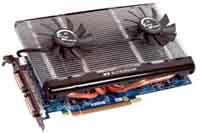
Simviation Forums
Flight Simulator and other chat

 Mainboard: Asus P5K-Premium, CPU=Intel E6850 @ x8x450fsb 3.6ghz, RAM: 4gb PC8500 Team Dark, Video: NV8800GT, HDD: 2x1Tb Samsung F3 RAID-0 + 1Tb F3, PSU: Antec 550 Basiq, OS: Win7x64, Display: 24&
Mainboard: Asus P5K-Premium, CPU=Intel E6850 @ x8x450fsb 3.6ghz, RAM: 4gb PC8500 Team Dark, Video: NV8800GT, HDD: 2x1Tb Samsung F3 RAID-0 + 1Tb F3, PSU: Antec 550 Basiq, OS: Win7x64, Display: 24&






 Mainboard: Asus P5K-Premium, CPU=Intel E6850 @ x8x450fsb 3.6ghz, RAM: 4gb PC8500 Team Dark, Video: NV8800GT, HDD: 2x1Tb Samsung F3 RAID-0 + 1Tb F3, PSU: Antec 550 Basiq, OS: Win7x64, Display: 24&
Mainboard: Asus P5K-Premium, CPU=Intel E6850 @ x8x450fsb 3.6ghz, RAM: 4gb PC8500 Team Dark, Video: NV8800GT, HDD: 2x1Tb Samsung F3 RAID-0 + 1Tb F3, PSU: Antec 550 Basiq, OS: Win7x64, Display: 24&

 I've copied and studied this info soooooo careful. You "GUYS" need to write a book to explain "things" so the rest of us can understand it . I "got it" much clearer than the many books I've read about building a PC. I know I'm somewhat backward - - BUT - - it is nice to understand things from the "BASIC's". Thanks again. caveman
I've copied and studied this info soooooo careful. You "GUYS" need to write a book to explain "things" so the rest of us can understand it . I "got it" much clearer than the many books I've read about building a PC. I know I'm somewhat backward - - BUT - - it is nice to understand things from the "BASIC's". Thanks again. caveman 
Users browsing this forum: No registered users and 461 guests